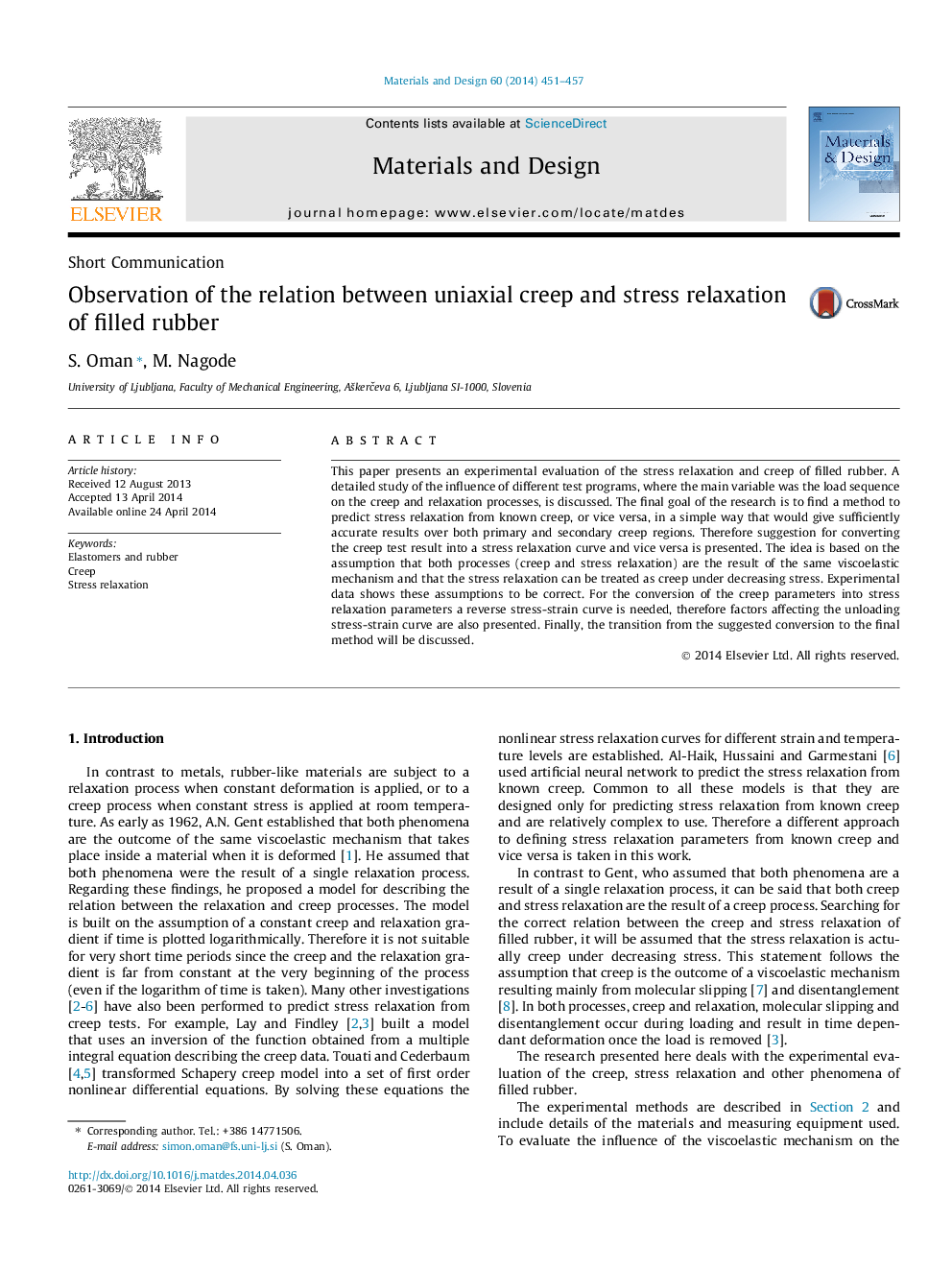| Article ID | Journal | Published Year | Pages | File Type |
|---|---|---|---|---|
| 829215 | Materials & Design (1980-2015) | 2014 | 7 Pages |
•An idea of how to predict creep from stress relaxation and vice versa is presented.•Stress relaxation can be treated as creep at decreasing stress.•The shape of the unloading stress–strain curve is independent of the test type.•Making or not a total unloading between stress levels affects the results.
This paper presents an experimental evaluation of the stress relaxation and creep of filled rubber. A detailed study of the influence of different test programs, where the main variable was the load sequence on the creep and relaxation processes, is discussed. The final goal of the research is to find a method to predict stress relaxation from known creep, or vice versa, in a simple way that would give sufficiently accurate results over both primary and secondary creep regions. Therefore suggestion for converting the creep test result into a stress relaxation curve and vice versa is presented. The idea is based on the assumption that both processes (creep and stress relaxation) are the result of the same viscoelastic mechanism and that the stress relaxation can be treated as creep under decreasing stress. Experimental data shows these assumptions to be correct. For the conversion of the creep parameters into stress relaxation parameters a reverse stress-strain curve is needed, therefore factors affecting the unloading stress-strain curve are also presented. Finally, the transition from the suggested conversion to the final method will be discussed.
